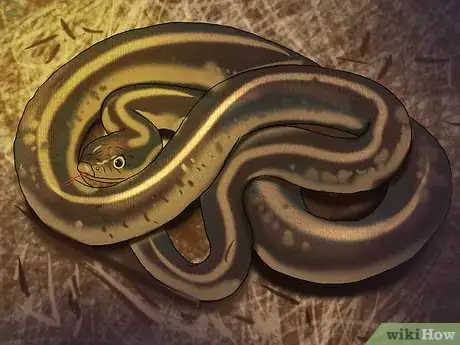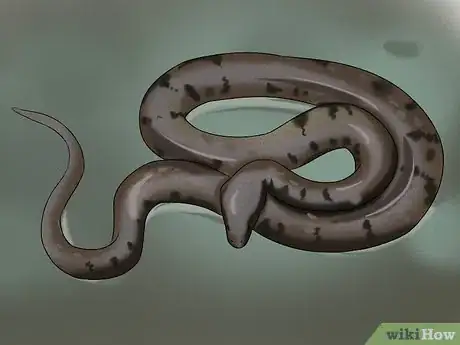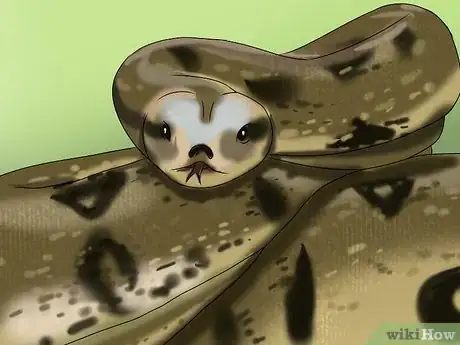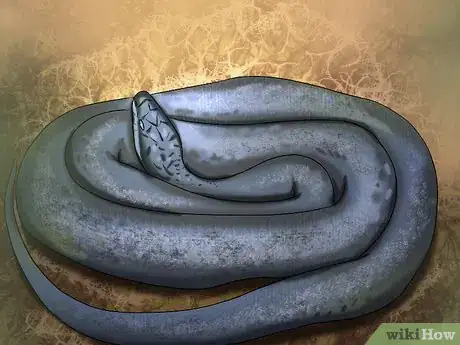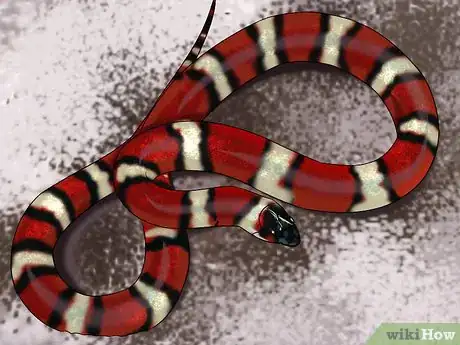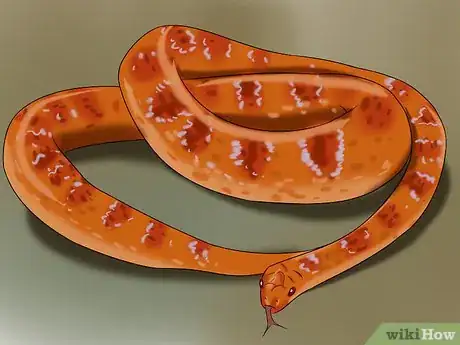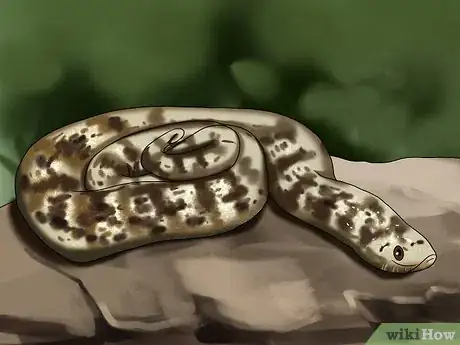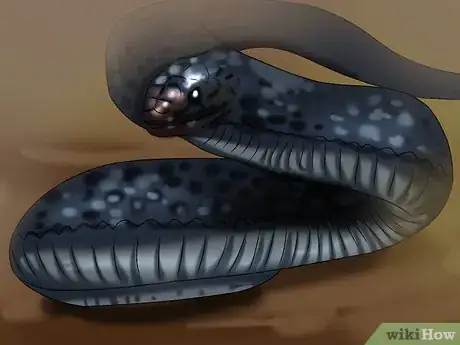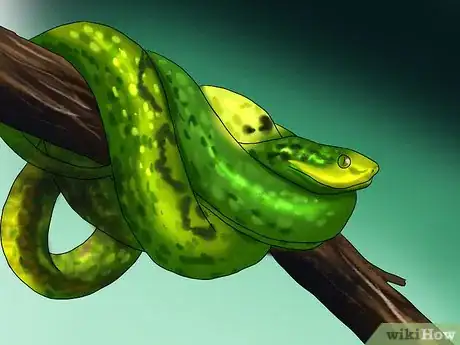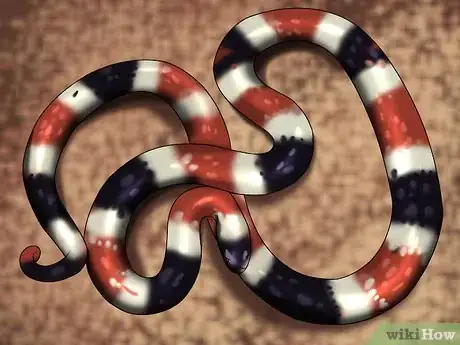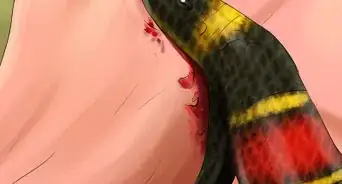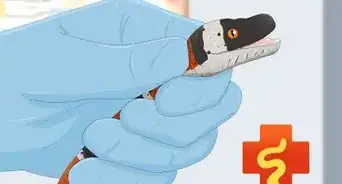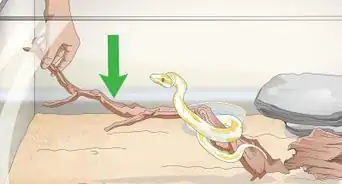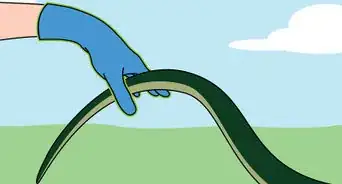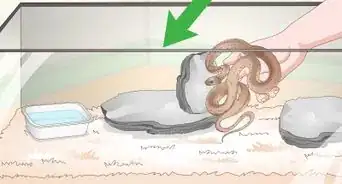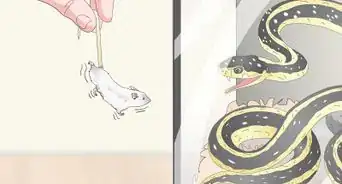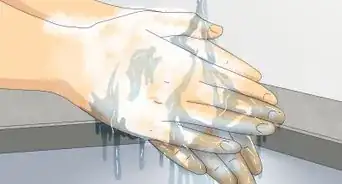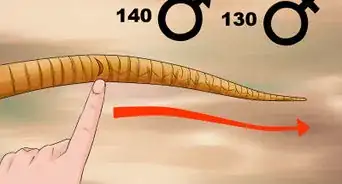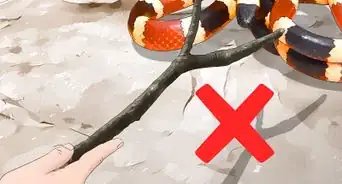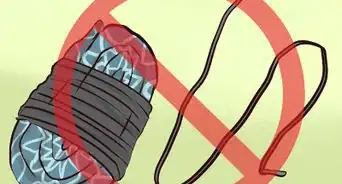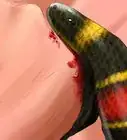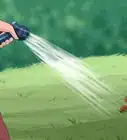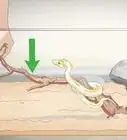wikiHow is a “wiki,” similar to Wikipedia, which means that many of our articles are co-written by multiple authors. To create this article, volunteer authors worked to edit and improve it over time.
There are 7 references cited in this article, which can be found at the bottom of the page.
This article has been viewed 22,717 times.
Learn more...
In North America, there are several varieties of snake that may slither into your garden or yard area, depending on where you live and whether or not your house area borders the woods or countryside. If you do live where snakes are likely to be about, it makes a lot of sense to identify the snakes before encountering one, so that you know what sort of snake you're dealing with and how to respond.
Steps
-
1Know what a garter snake (Thamnophis spp.) looks like. Garter snakes are the most common type of snake in North America that is likely to be venture into your garden. They have a variety of color possibilities, including a mix of greens and sometimes reds, browns, blacks, oranges, greys and yellows. Garter snakes are often referred to as garden or gardener snakes; they tend to be the most commonly encountered garden snake and if you do have them, they're a useful insect eater.[1]
- Butler's garter snake[2]
-
2Know what a water snake (Nerodia species) looks like. This snake is common in areas next to water bodies. While they usually are found in water, this is not always the case.[3]Advertisement
-
3Know what constrictor snakes look like. These include the gopher snakes (Pituophis species), king snakes (Lampropeltis species) and pine snakes.
- Gopher snake
- King snake
- Pine snake
-
4Know what rat snakes (Elaphe species) look like.
-
5Know what milk snakes (Elaphe species) look like.
-
6Know what corn snakes (Elaphe species) look like.
-
7Know what a hog-nosed snake (Heterodon species) looks like.
-
8Know what an indigo snake (Drymarchon species) looks like.
-
9Know what pit vipers look like. Pit vipers are venomous and dangerous snakes to have in the garden, so instant recognition and staying safe are the way to go if they enter your garden.[4]
- Pygmy rattlesnake
- Eastern Diamondback rattlesnake
- Mohave green rattlesnake (extremely venomous)
-
10Know what a coral snake looks like. This snake is highly venomous but it's rare and non-aggressive. Get professional help to remove one if spotted in your garden.[5]
Warnings
- Always take the utmost precaution when trying to identify a snake. Even if you think it is non-venomous, any snake can bite and cause pain and inflict damage, including leaving behind bacteria in a wound. If you're not certain, the snake may be venomous, making it even more important to keep your distance. Get a good look at the snake without getting close enough for it to strike––stay as far away as possible.⧼thumbs_response⧽
- Keep all children and small or big animals away until the snake has been removed.⧼thumbs_response⧽
References
- ↑ http://www.californiaherps.com/identification/snakesid/gartersnakes.id.html
- ↑ http://www.biokids.umich.edu/critters/Thamnophis_butleri/
- ↑ https://www.livescience.com/52768-water-snake-facts.html
- ↑ https://ufwildlife.ifas.ufl.edu/venomous_snake_identification.shtml
- ↑ https://www.livescience.com/43938-coral-snakes-colors-bites-farts-facts.html
- https://en.wikipedia.org/wiki/Garter_snake
- http://davesgarden.com/guides/articles/view/3273/
